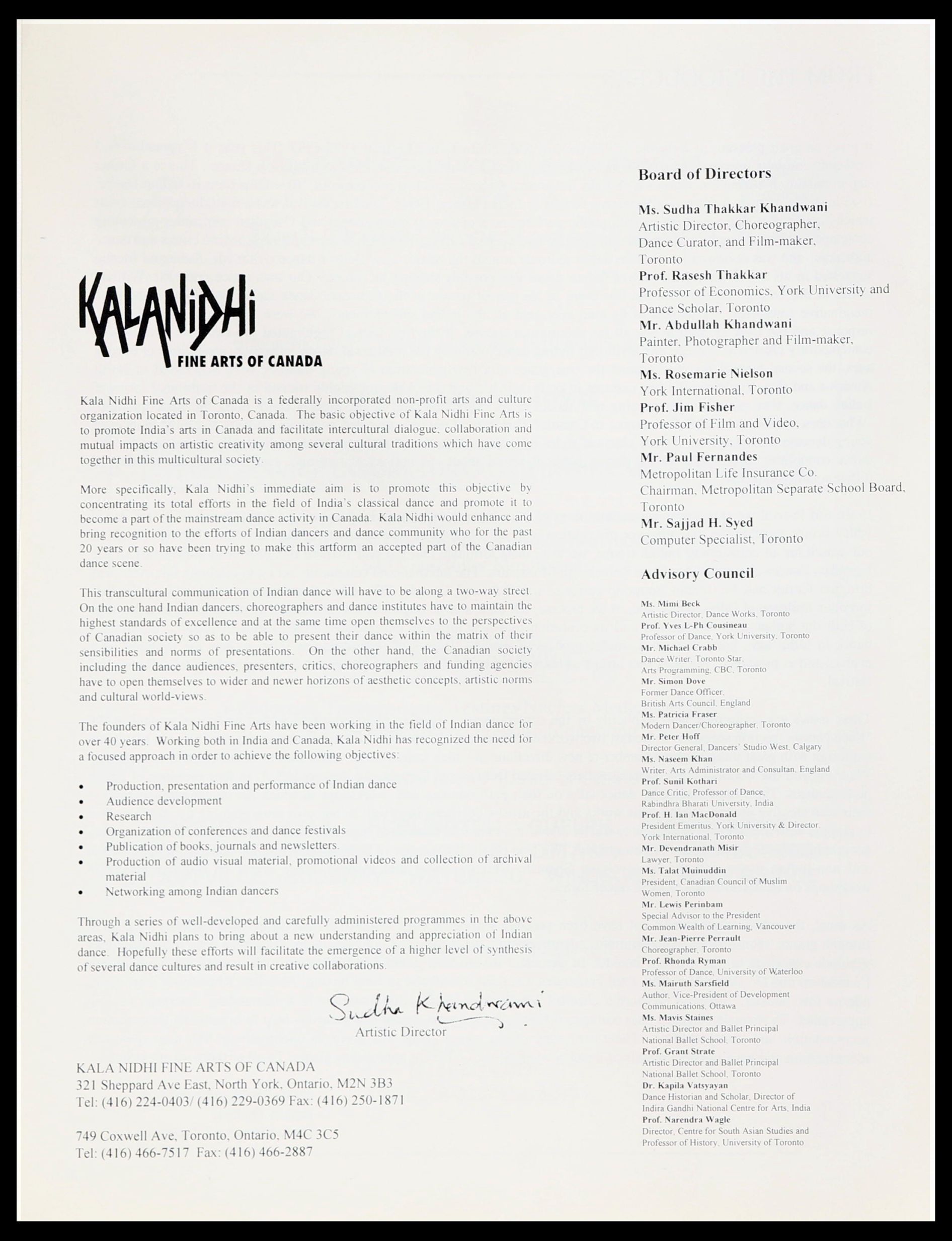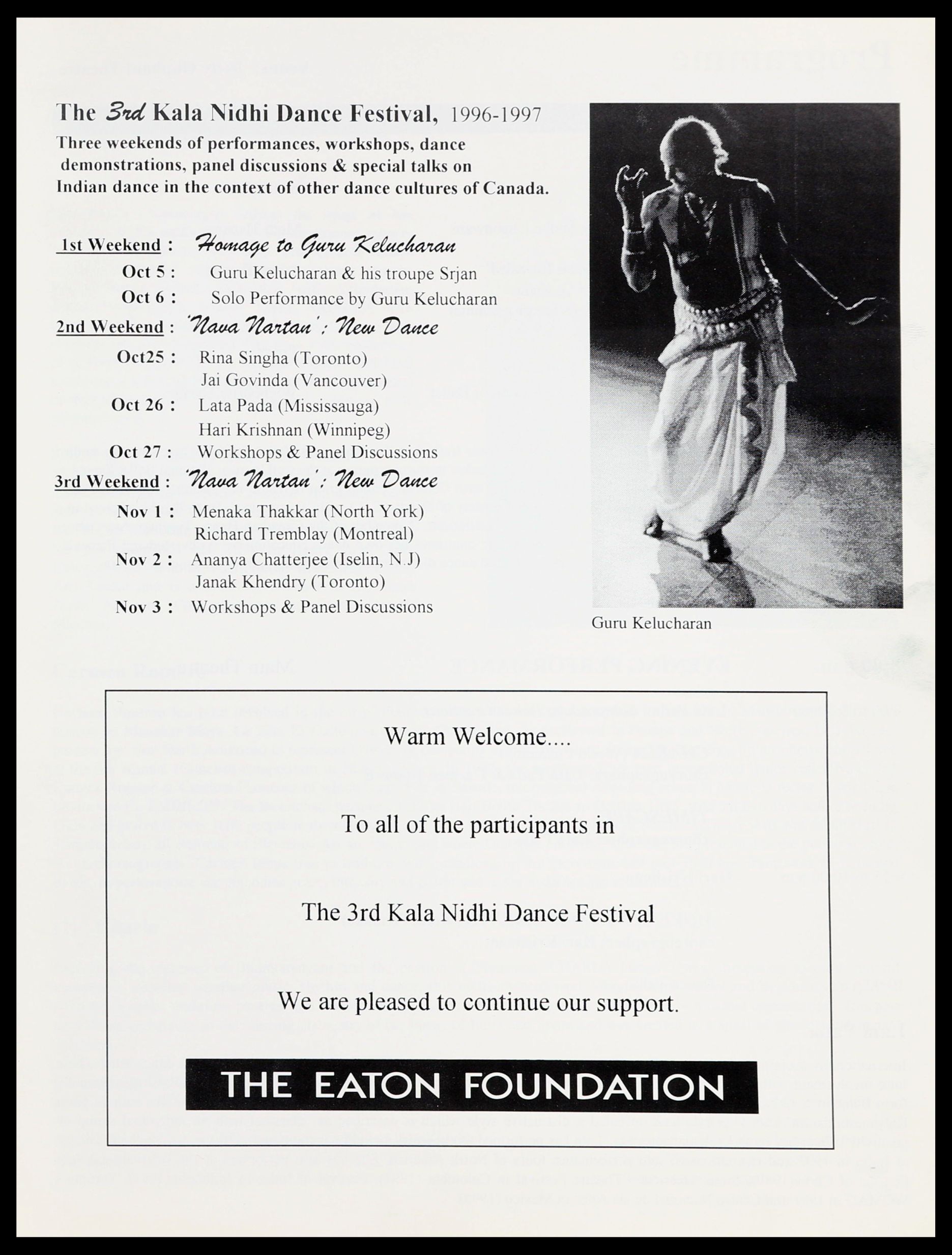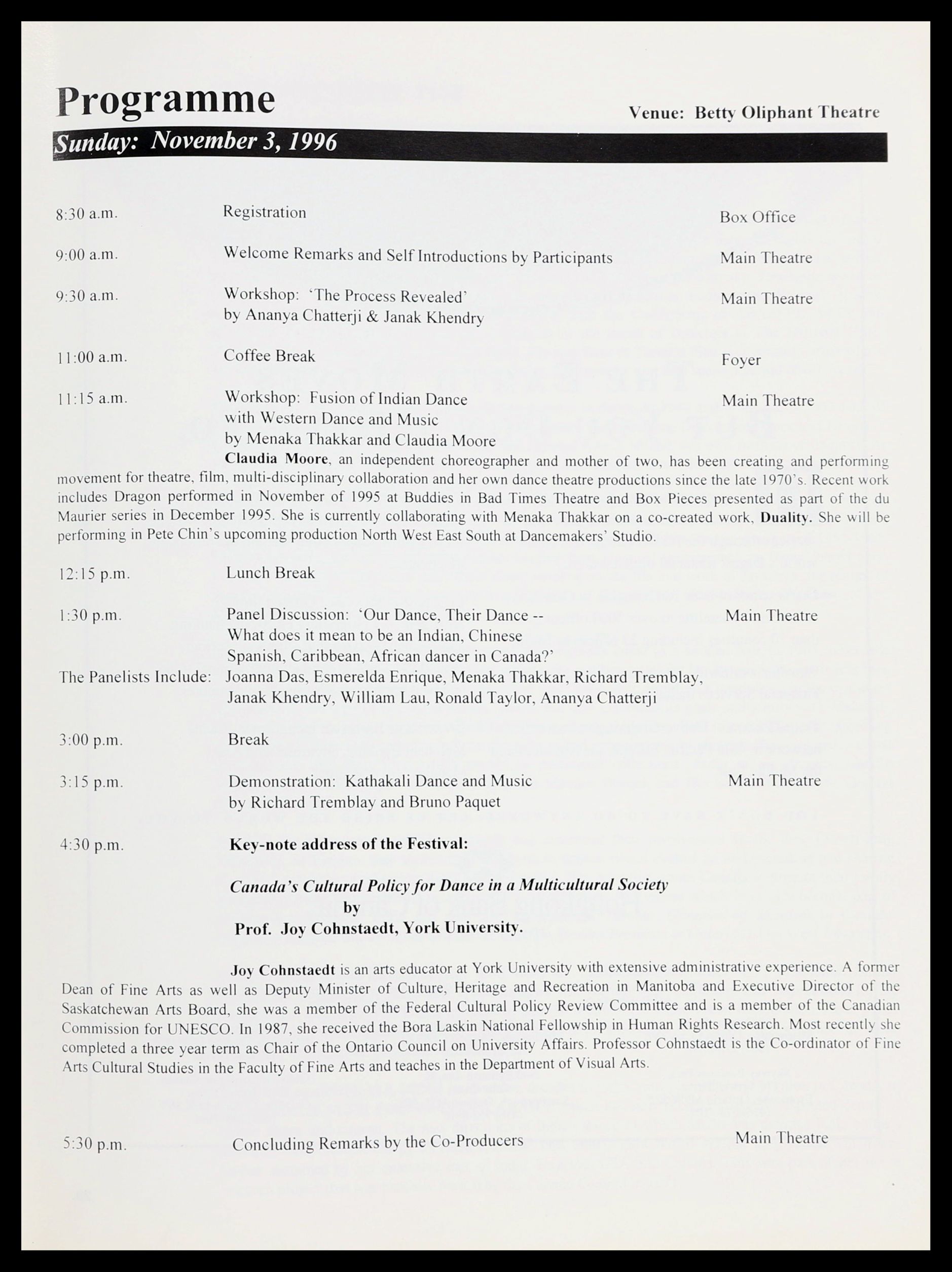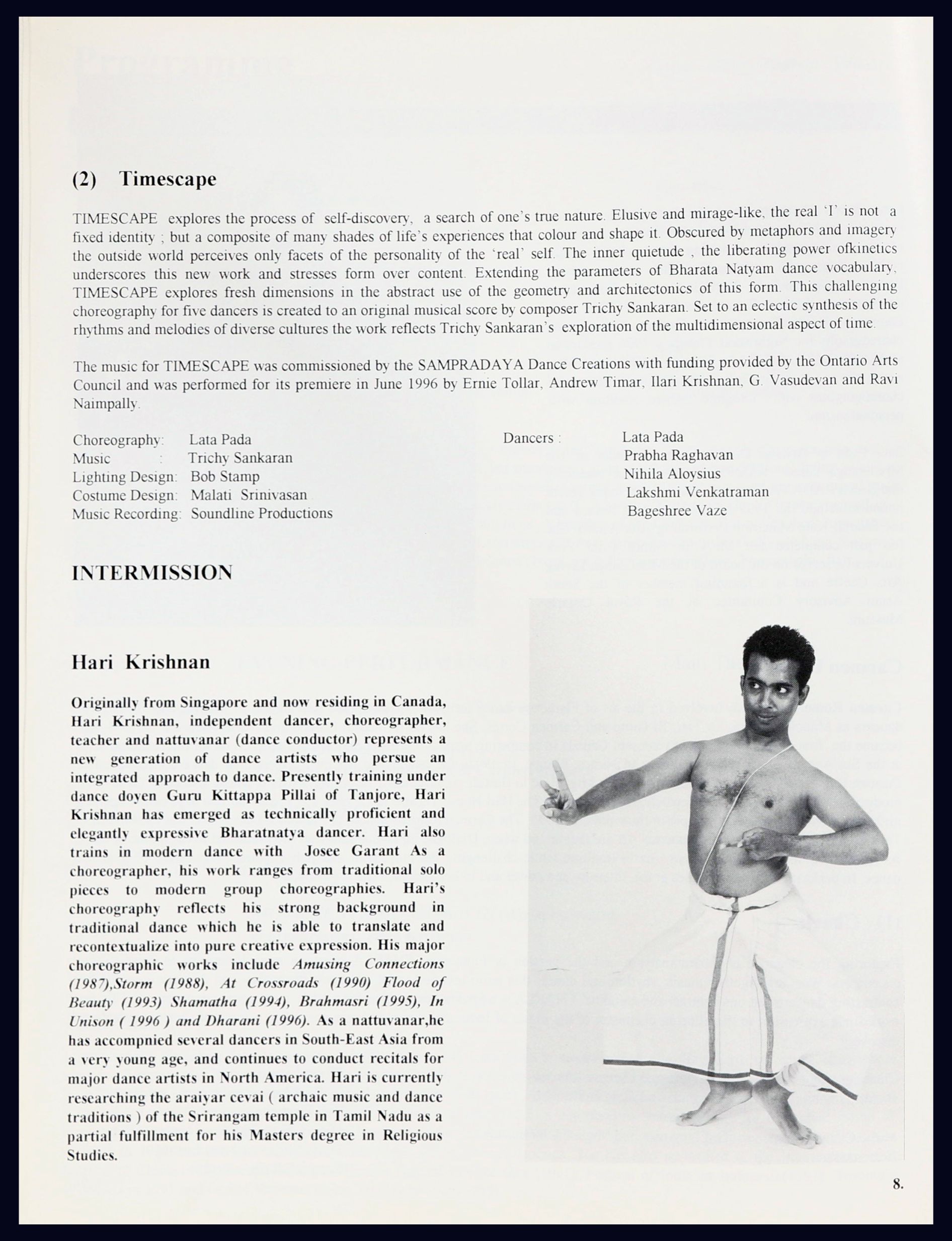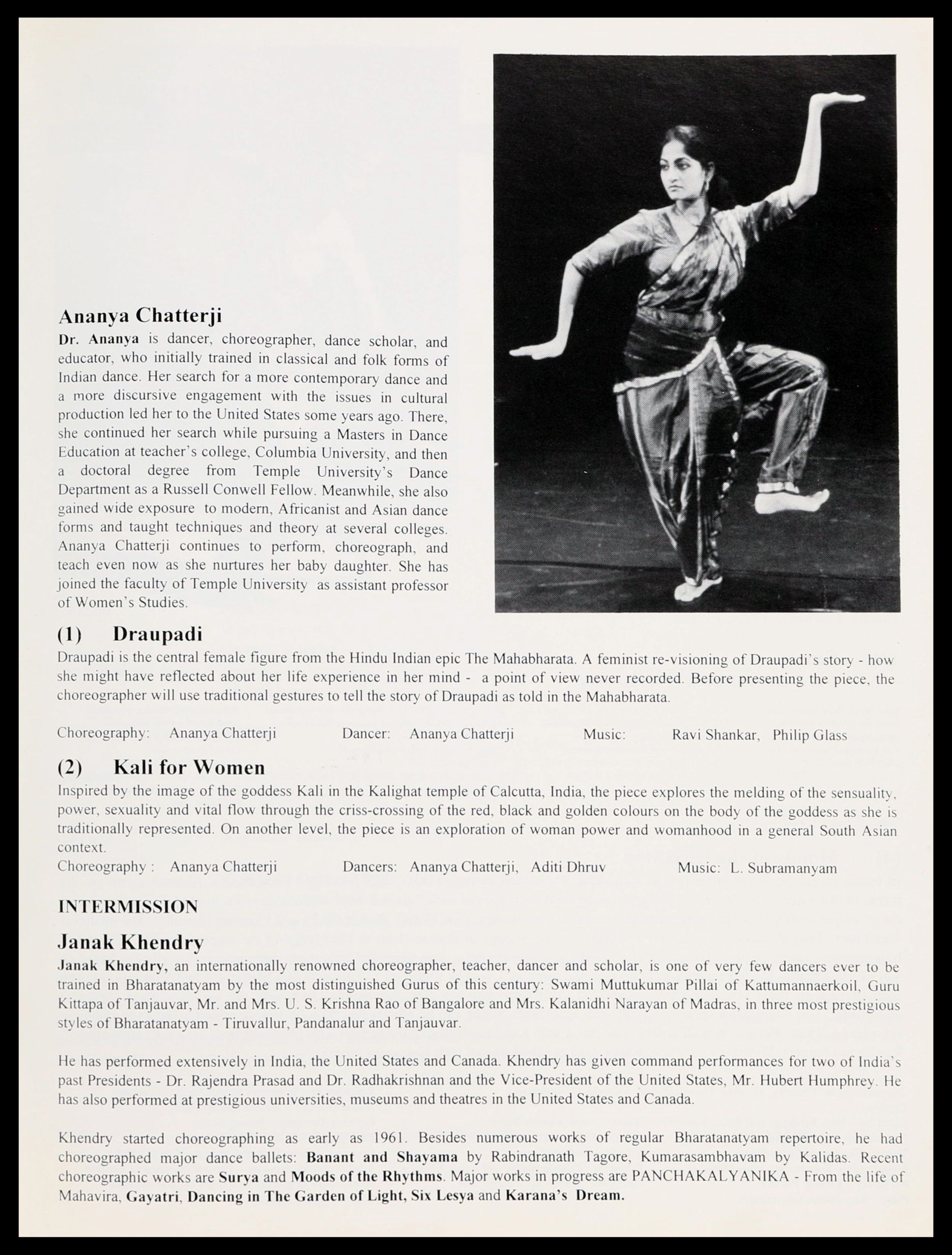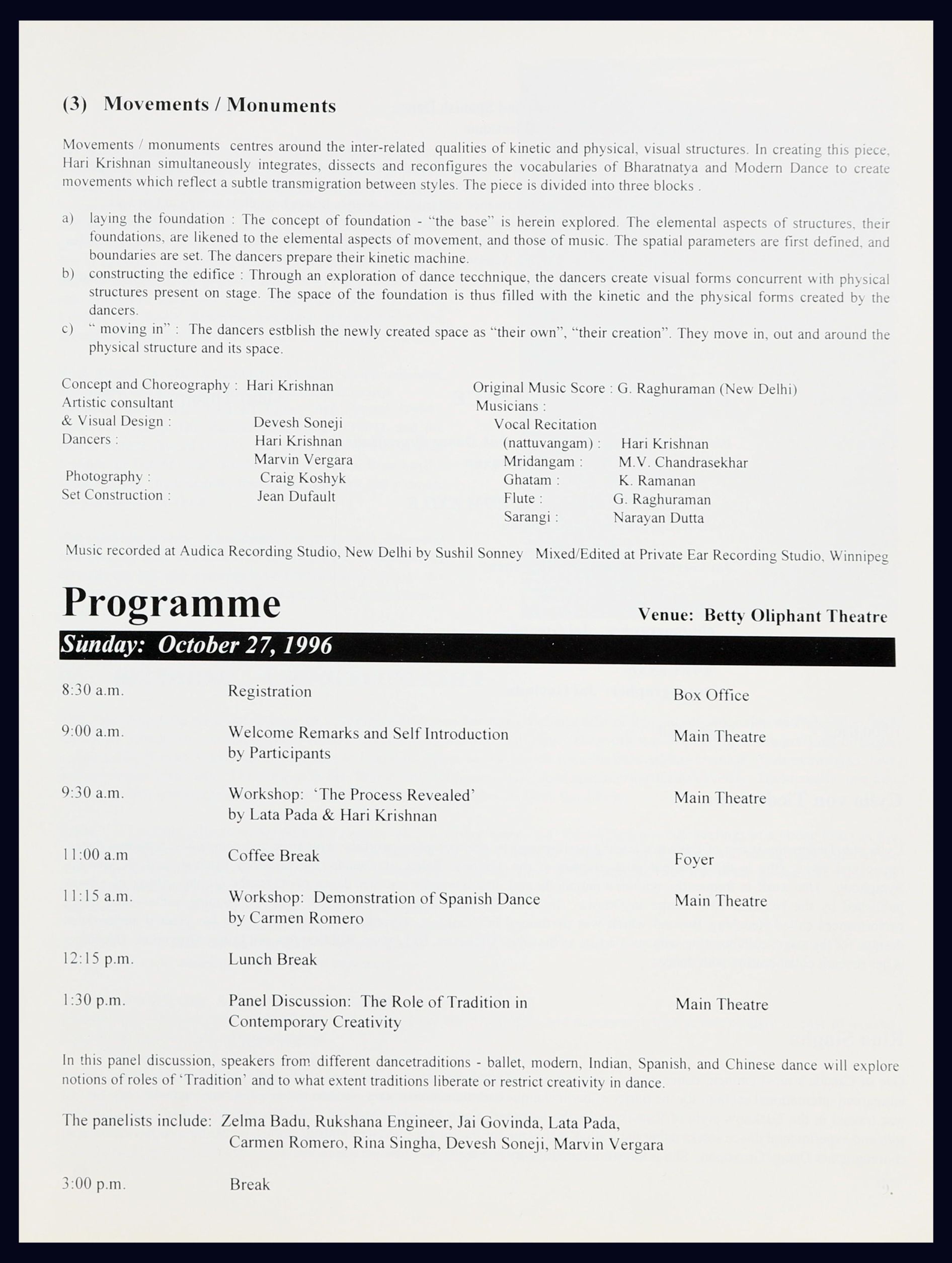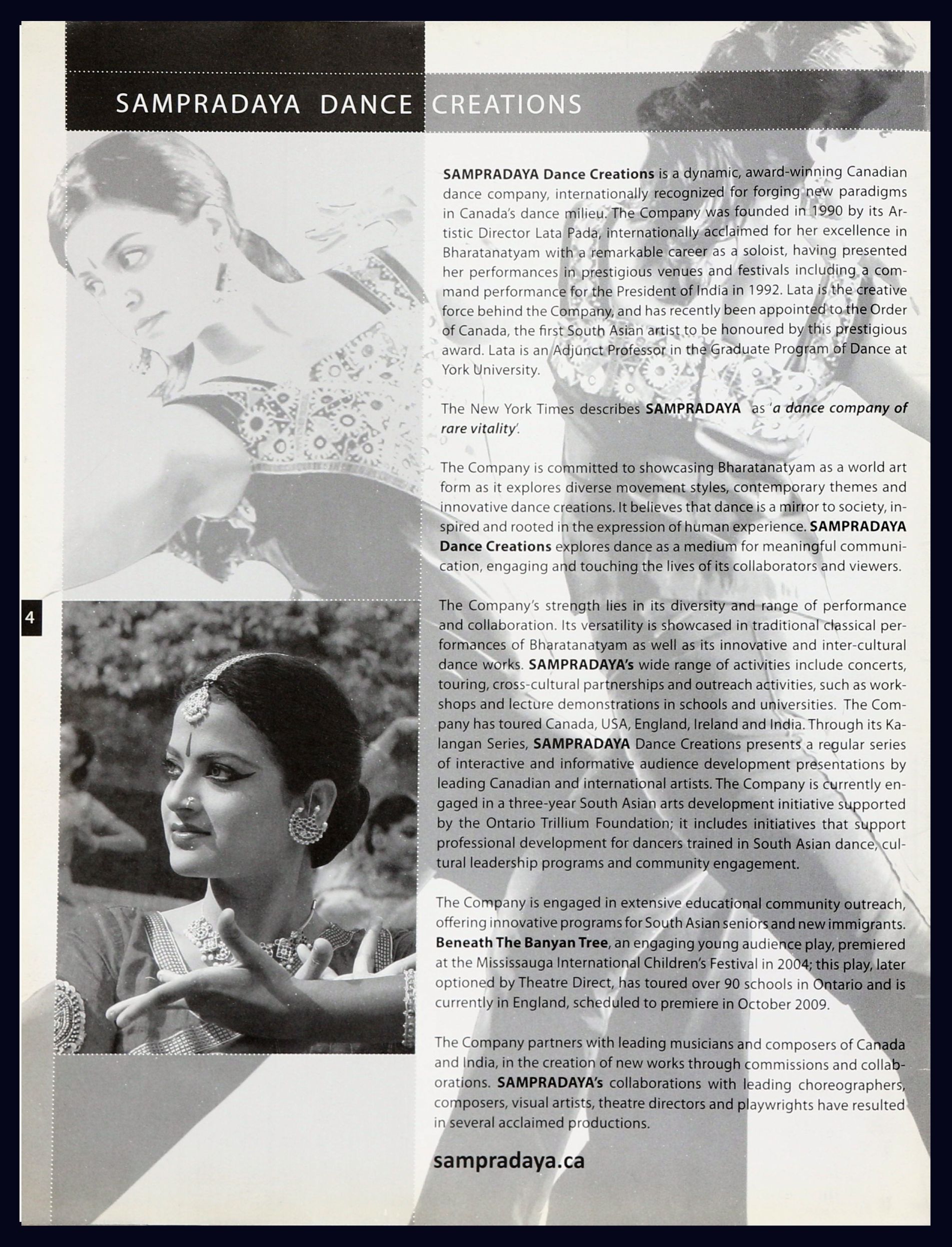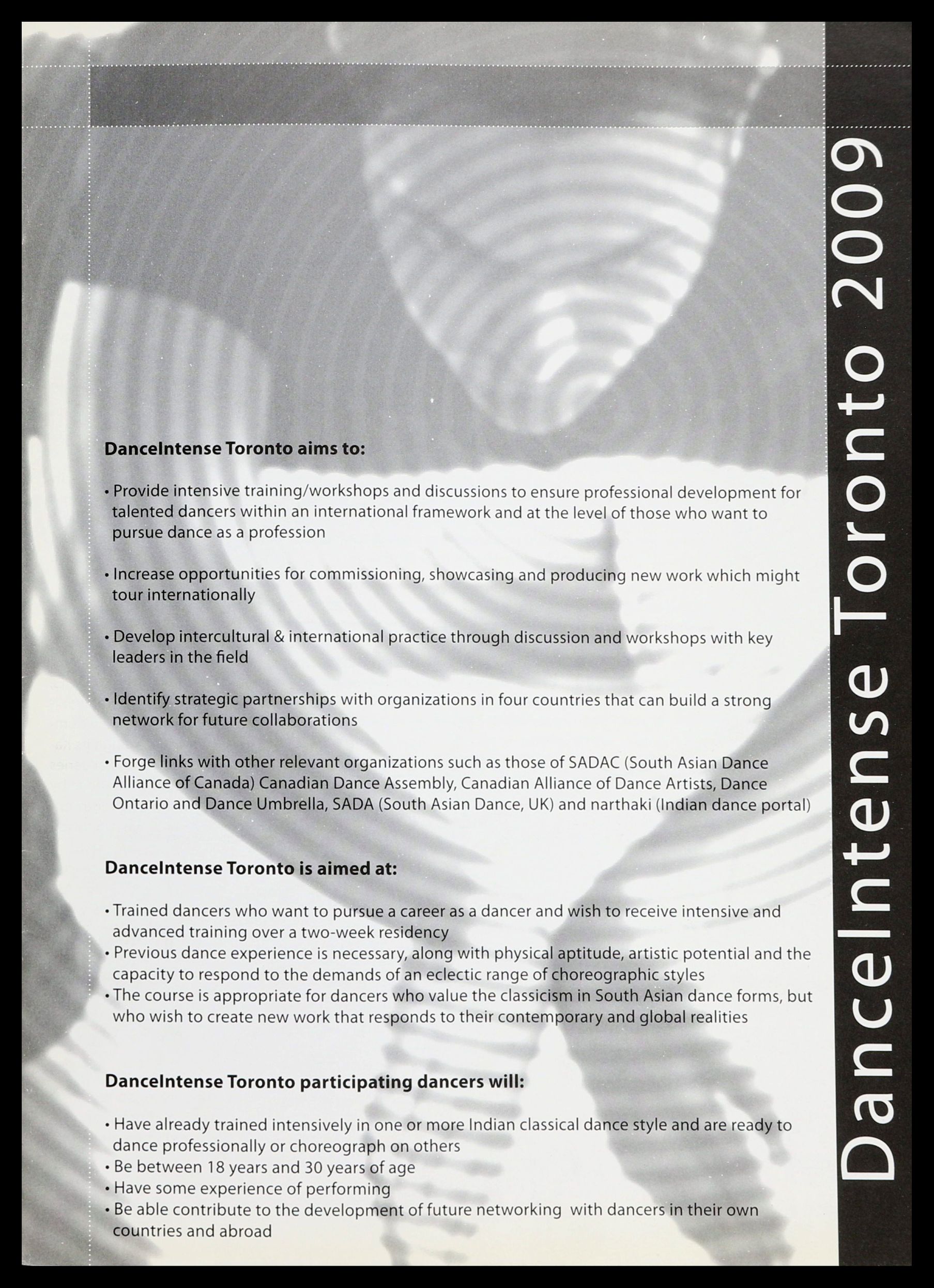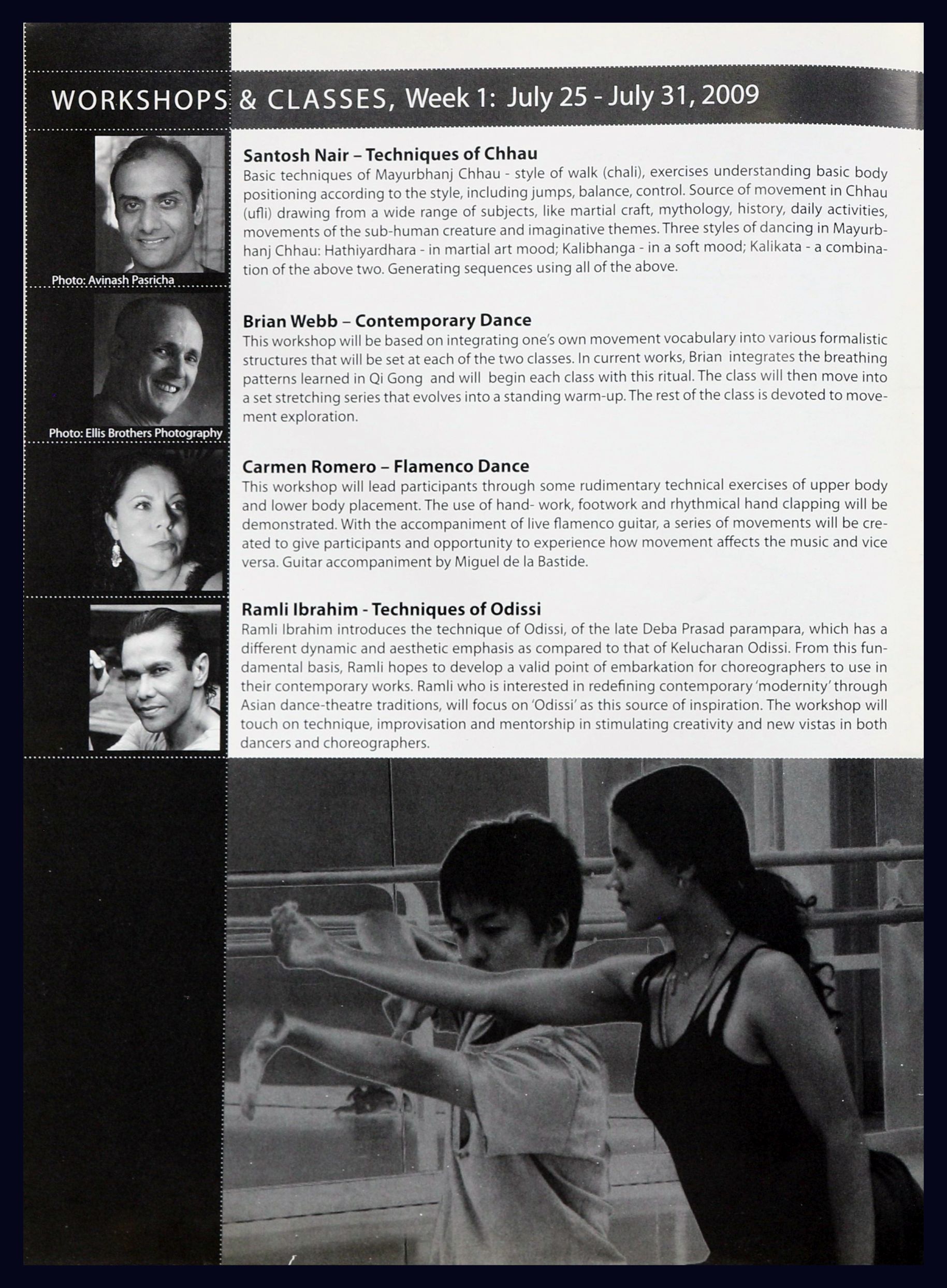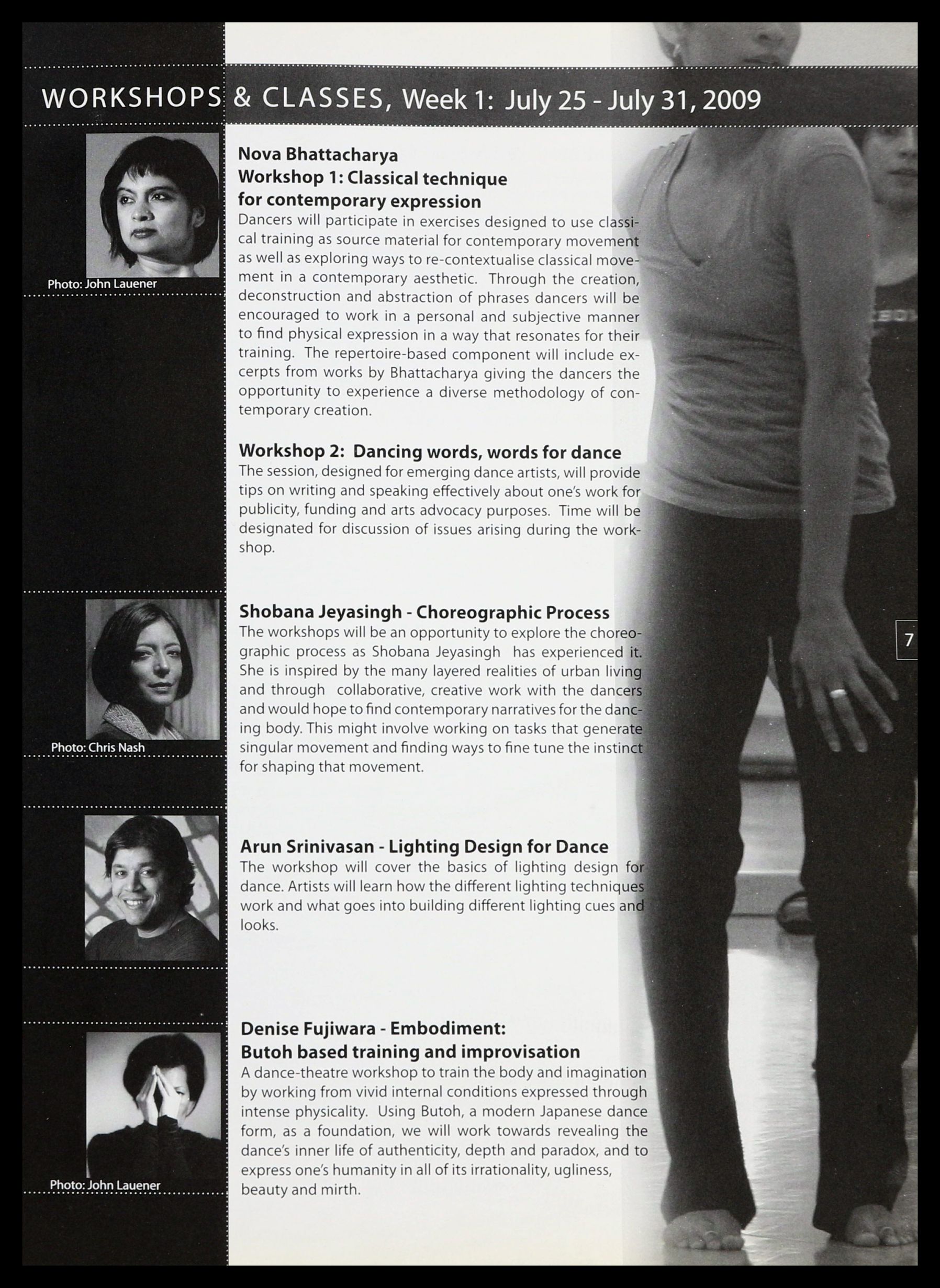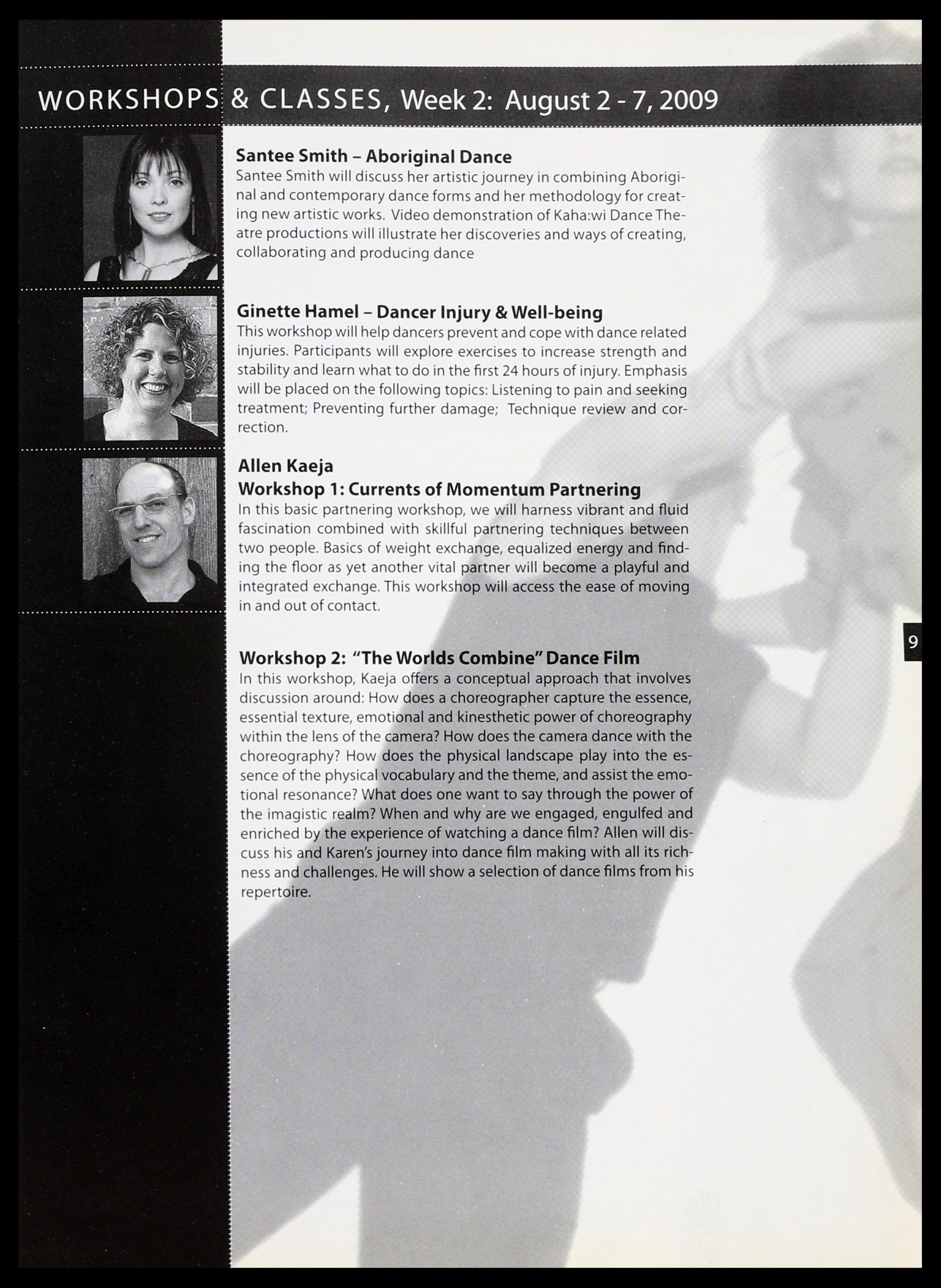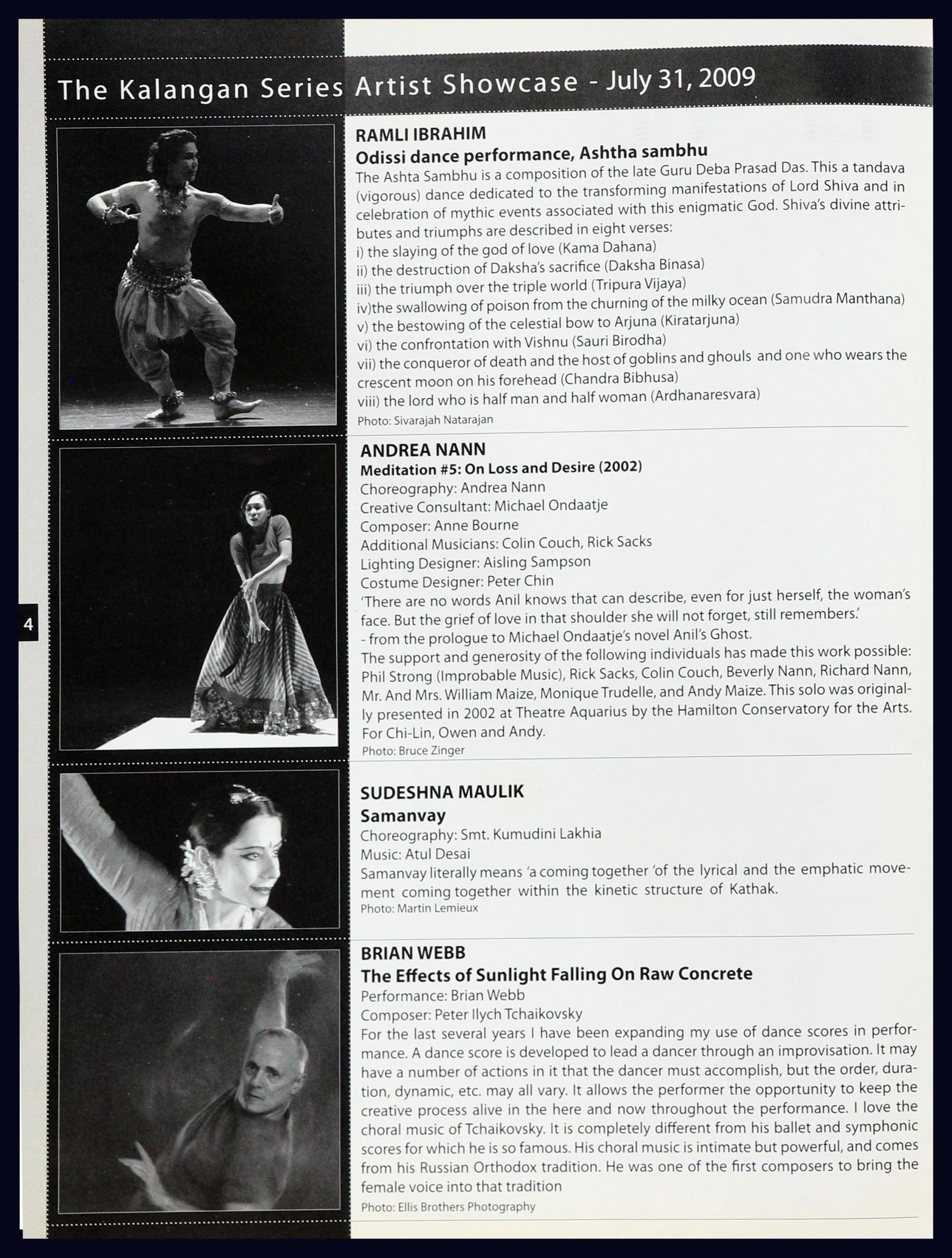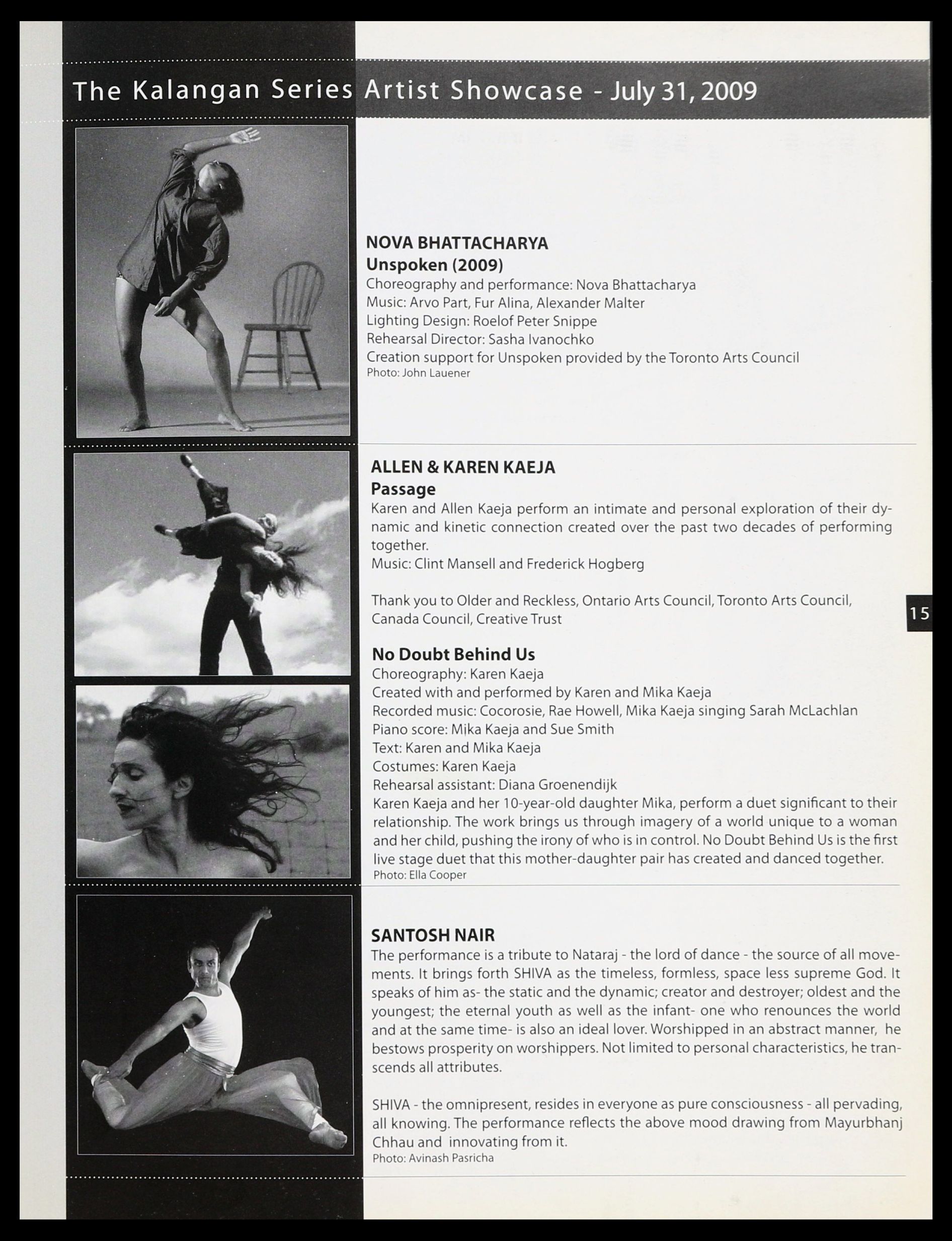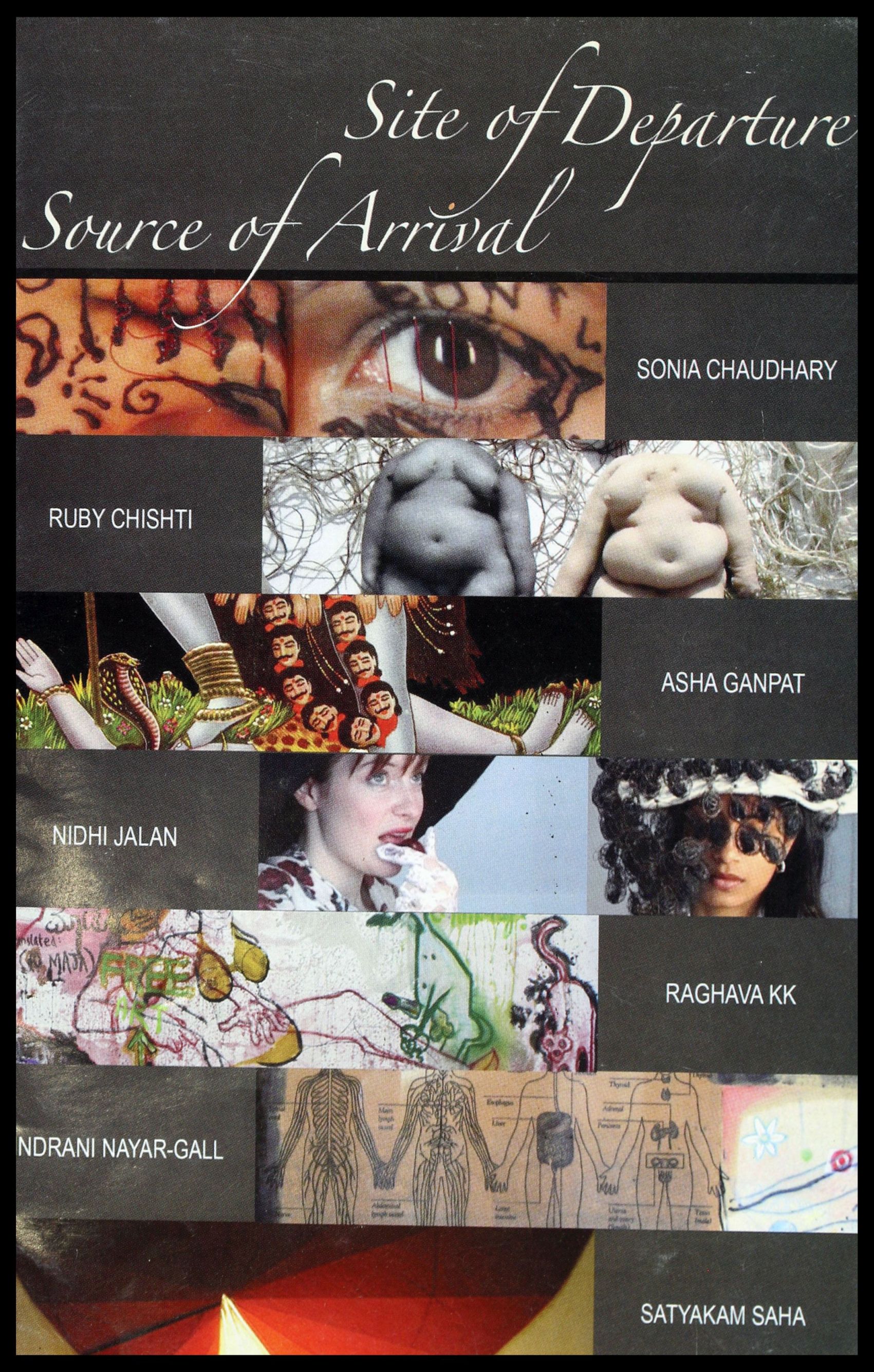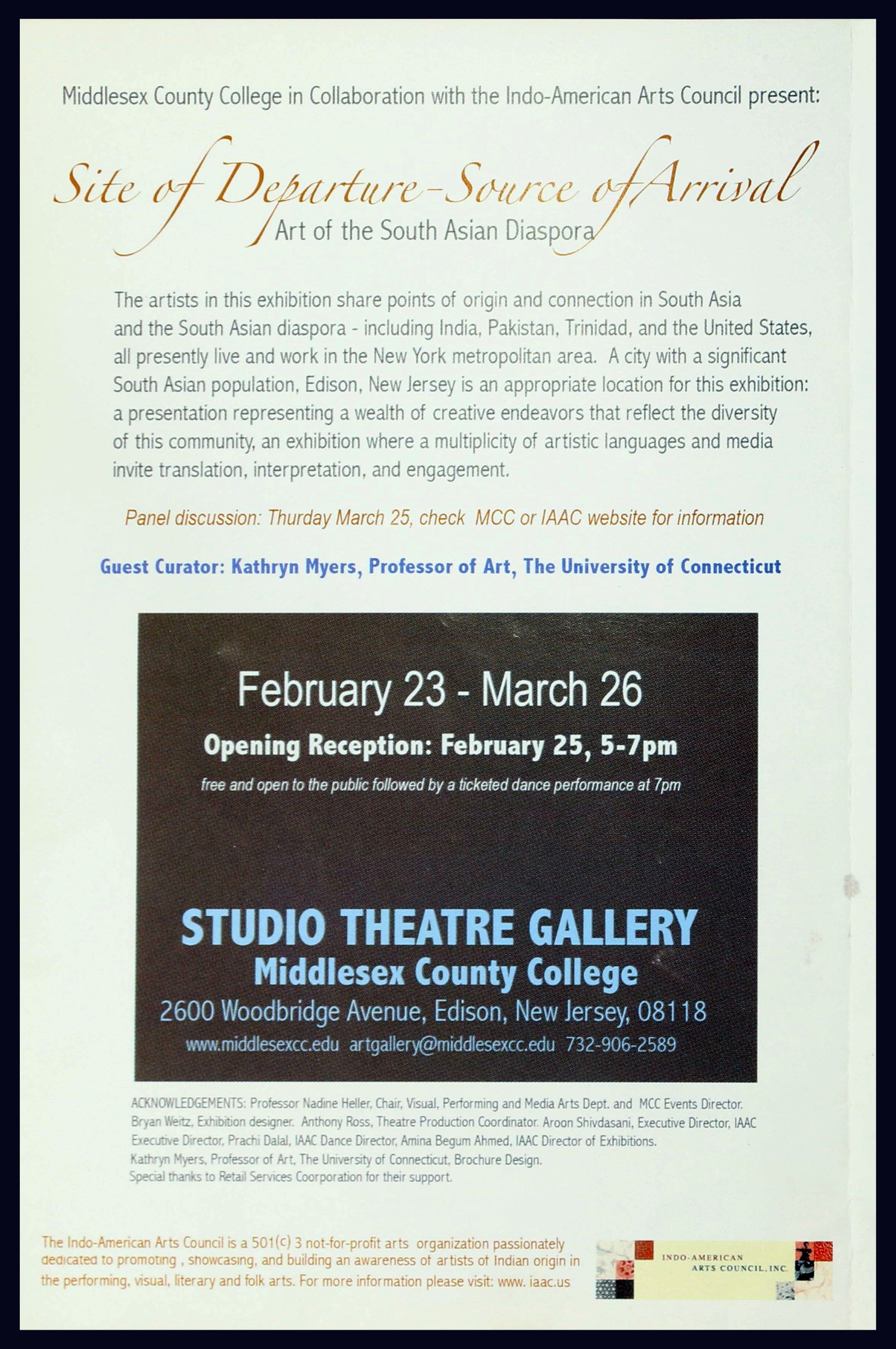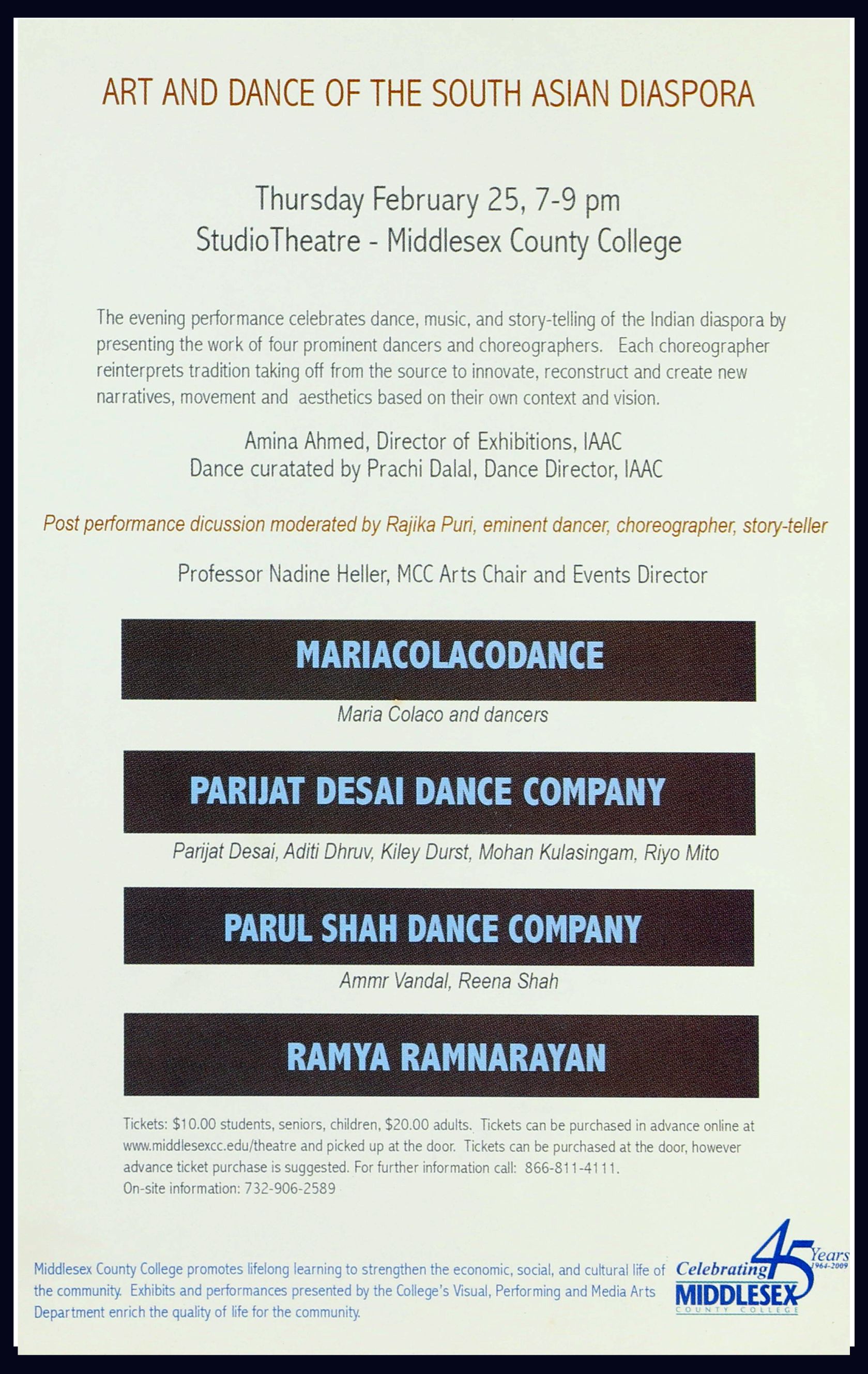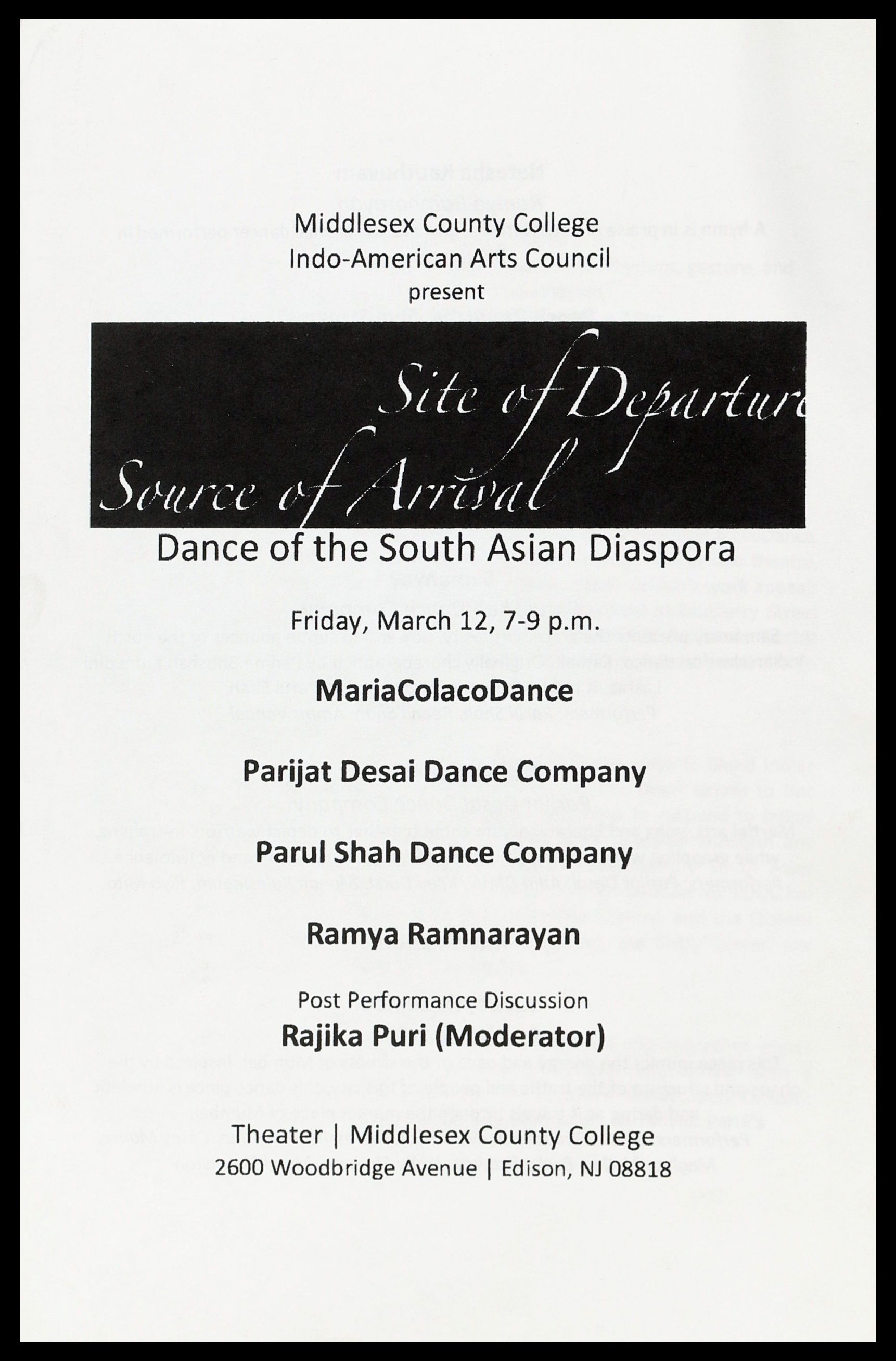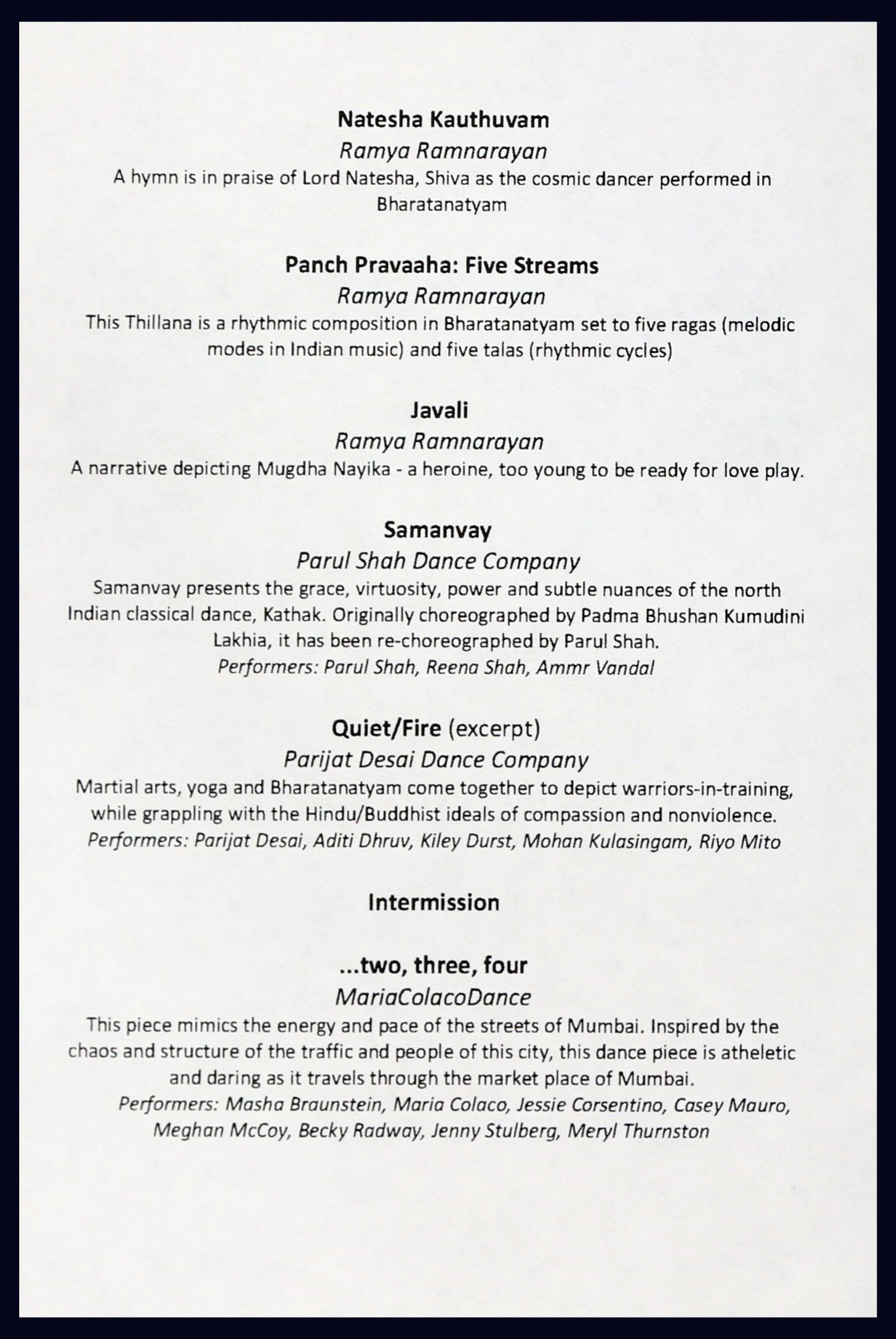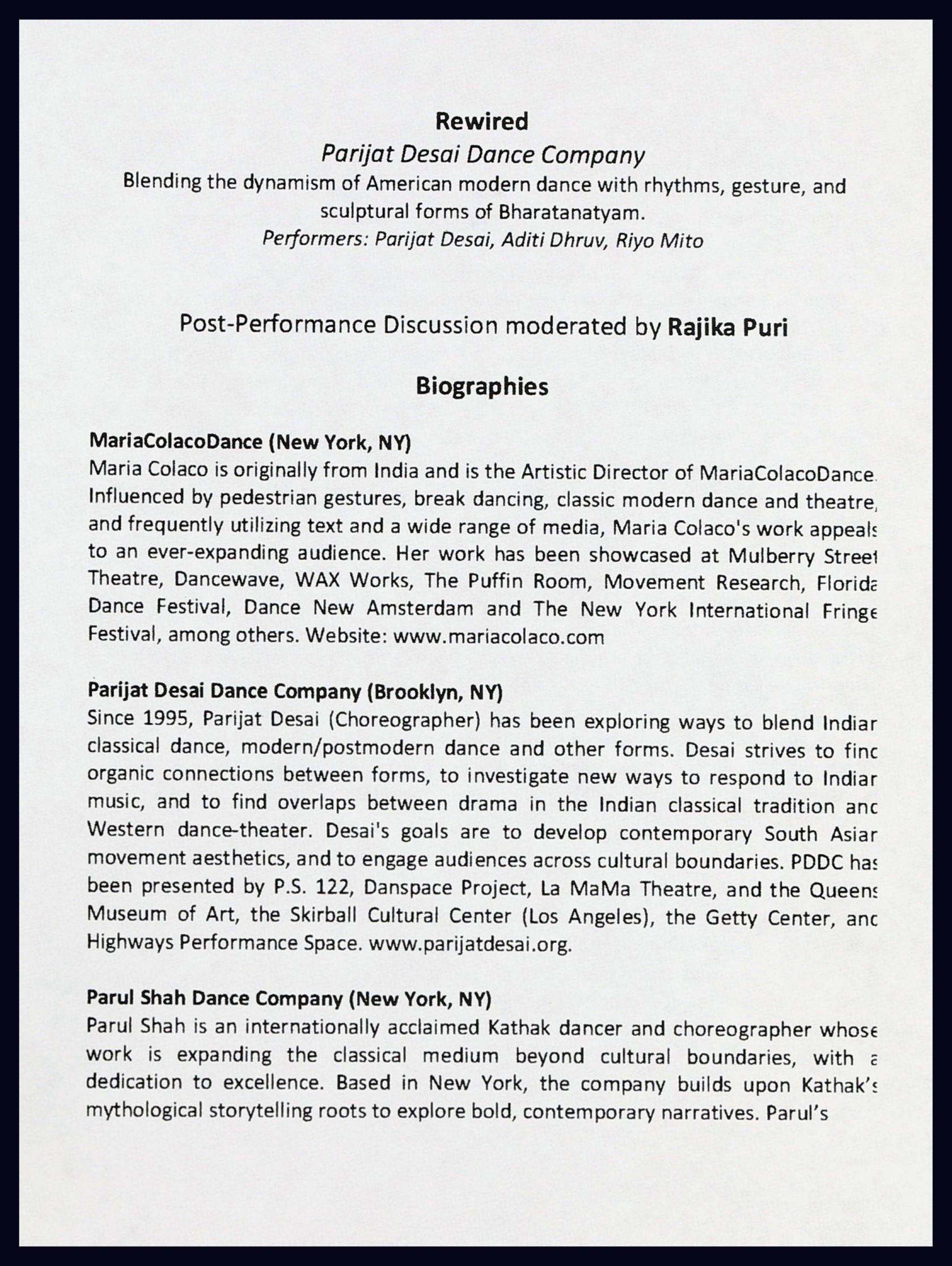KalaNidhi

As stated in the festival brochure, KalaNidhi’s aim is to promote “India’s arts in Canada and facilitate intercultural dialogue, collaboration and mutual impacts on artistic creativity among cultural traditions.” This goal is very apparent with the broad range of styles, both classical and modern, present in the performances, workshops, and lectures. Of note is a panel titled, “Our Dance, Their Dance - - What does it mean to be an Indian, Chinese, Spanish, Caribbean, African dancer in Canada?” and a workshop, “Fusion of Indian Dance with Western Dance and Music.” Additionally, the festival includes performances by both diasporic Indians and other international artists, such as Jai Govinda, Hari Krishnan, and Lata Pada. The profuse support from Canadian agencies, such as Canadian Heritage and Toronto Arts Council, provides evidence for the strength of the Indian diasporic community in Canada. Further, it demonstrates the significance of the dance community within, which wishes to evolve alongside the larger group.
DanceIntense Toronto

DanceIntense Toronto holds a similar attitude to diasporic dancings as the KalaNidhi festival, yet their goals differ slightly, as the two week residency aims to provide training to dancers within an international framework. The workshops go beyond just the style of dance, offering workshops on lighting design, the choreographic process, and dancer injury and well-being. A wide range of styles are included as well, running from Indian classical (Bharatanatyam, Kathak, and Odissi) to other international styles such as Flamenco and Aboriginal. The performance showcase also illustrates the international scope, with performances in classical Indian and contemporary styles; of note, an Odissi composition, performed by Ramli Ibrahim. The ephemera suggests that there is a stage for professional Indian dancers in the diaspora, and festivals like DanceIntense recognize the span of training that is essential for these diasporic artists.
Site of Departure, Source of Arri...

As indicated through the introductory paragraphs, the location for this performance was chosen with its diverse South Asian population. The performance is being planned with the population in mind, indicating a community that still has ties to their country of origin and has appreciation for their country’s arts. Multiple classical styles are performed through the seven acts, with the final act being a fusion of American modern dance and Bharatanatyam. The artists have reinterpreted tradition, illuminating that innovation in dance is present and flourishing.
Lata Pada
Lata Pada is a Bharatanatyam dancer based in Toronto, Canada. She is recognized for her innovative choreography, merging Bharatanatyam and contemporary themes. Pada had an extensive solo career and frequently presented at international dance conferences. In 1990, she founded Sampradaya Dance Creations, which is dedicated to the showcasing of Bharatanatyam as an international form, along with exploring various movement styles and contemporary themes. Lata Pada has significantly impacted South Asian dance in Canada and is a prime example of how classical and modern forms flourishes together in the diaspora.
Background
Image Caption :Modern, contemporary, and fusion styles presented in festivals in the Indian diaspora.






